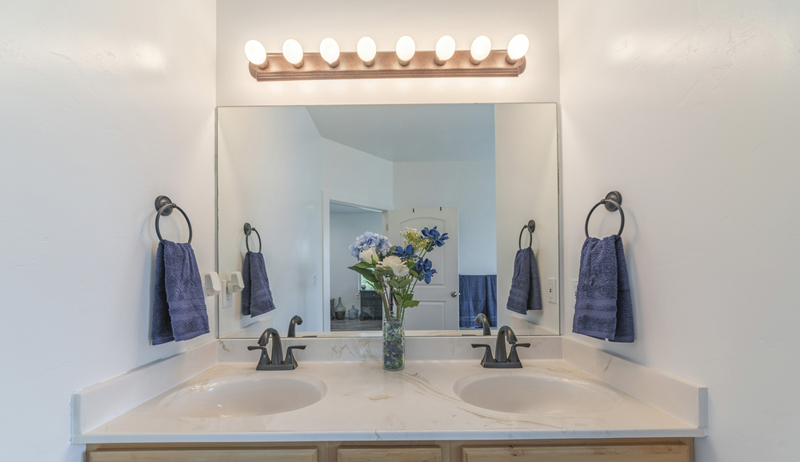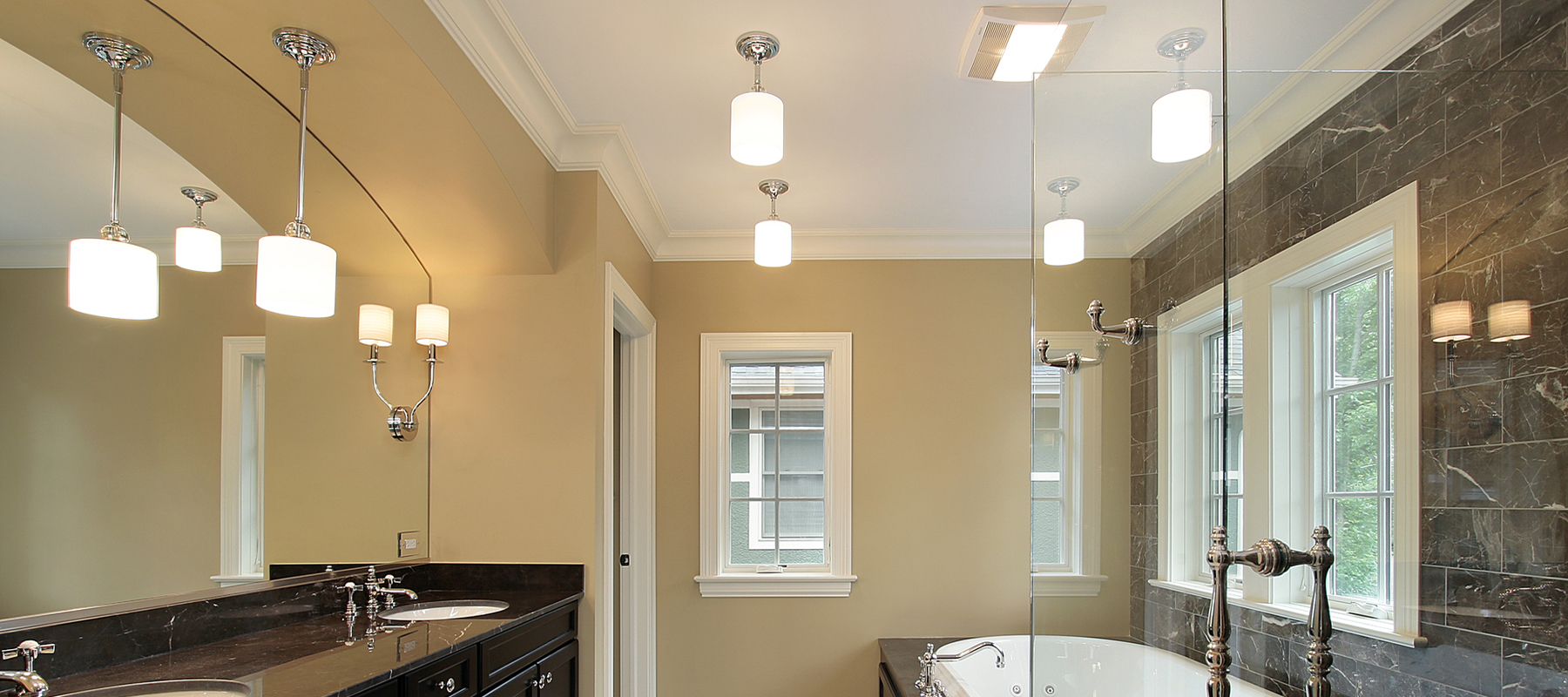How Much to Install Recessed, Vanity & Accent Lighting in your Bathroom
Last Updated: December 27, 2023

Fact Checked By: Ryan Maguire
On This Page
Bathrooms may be small, but they are where people get ready to face the world.
As a result, bathroom lights are not only a design element, but also highly functional.
To make sure you appear in the best light, it's important to put some thought into your bathroom lighting plan.
How Much Does Bathroom Lighting Installation Cost? #
Installing new lighting in a bathroom remodel runs $500 to $2,000 depending on the electrician's hourly rate, number of fixtures and complexity:
Light Fixture Costs
- Vanity light bar: $50 - $150 per fixture
- Ceiling flush mount: $75 - $250
- Ceiling light with fan: $150 - $400
- Recessed cans: $75 - $150 per can
- Undercabinet LED strip: $25 per 5 ft
- Sconces: $60 - $250 per sconce
Electrician Labor
- Minor Wiring: $100 - $200 per hour
- New circuits & switches: $150-$250 per hour
So for example:
- Basic installation of 3 light bars plus a vent fan could run $850 - $1,500
- Complete rewiring, 5 cans, 2 sconces could be $1,500 - $2,500
Prices increase if drywall repairs are needed for new light box installations. Outdoor installation and smart home lighting also add cost.

Real-World Bathroom Lighting Installation Costs #
"I had an electrician install 4 recessed can lights plus a double vanity light bar in my small bathroom remodel. With minor wiring changes it was $1,100 total." - Janet D., Ohio
"For my master bath makeover I splurged on an LED chandelier plus sconces flanking the mirror over the dual sink vanity. With all new switches and dimmers it cost me $2,800." - Mark F., Illinois
"I converted my dark cramped bathroom into a spa retreat on a budget. I bought 4 moisture-resistant flush mount lights and had an electrician hook them up to the existing wiring and switch for only $630." - Jessica N., Indiana
"I finished my basement bathroom from scratch including having outlets wired for undercabinet lighting and 4 recessed cans installed. It also needed two 20 amp GFI circuits for the outlets and lighting which brought electrical costs to $3,100." - Robert T., Maine
Bathroom Lighting Types #
In the bathroom, four types of lighting prevail: ambient, task, accent, and decorative.
Ambient lighting is the primary light source that lends overall brightness to the space and allows people to move around safely.
There's also task lighting, which is turned on to assist with particular bathroom duties such as shaving and showering.
Accent lighting is similar to task lighting, but is meant to illuminate certain design features rather than preparation spaces.
A final option, decorative lighting, creates a specific design effect through the use of eye-catching fixtures. Be sure to layer bathroom lighting in order to avoid a flat or sterile setting.
Lighting Placement #
Bathroom lighting is placed either on the ceiling or the wall.
Overhead ceiling lights can be flush-mounted, recessed, or something more elaborate, like a mini-chandelier.
Wall-mounted lighting presents even more options, including wall sconces, vanity fixtures, and so-called Broadway lights (multi-light fixtures).
Lighting Colors #
The color of the bathroom and the effect you want to create therein are also important considerations.
Although people may not think of light as having a color, when you look more closely, you realize that light either has a white or a yellowish tone.
White lighting tends to be brighter and harsher, while yellow light has more of a soothing effect.
Depending on the ambience you want to create in the bathroom choose yellow or white light (or some combination of them) that accords with the bathroom paint color.
And don't forget to consider the effects of natural light on your bathroom.
Lighting Design #
The style of your bathroom lights may fit into your overall home decorating scheme, or else can be used to create a distinct design space.
Whatever the case, you have plenty of styles to choose from, such as colonial, mission, rustic, Victorian, contemporary, and classic fixture designs in materials that include nickel, chrome, brass, bronze, stainless steel, gold, iron, pewter, and platinum.
Note: If all of these choices seem overwhelming, consider consulting with an interior lighting designer.
